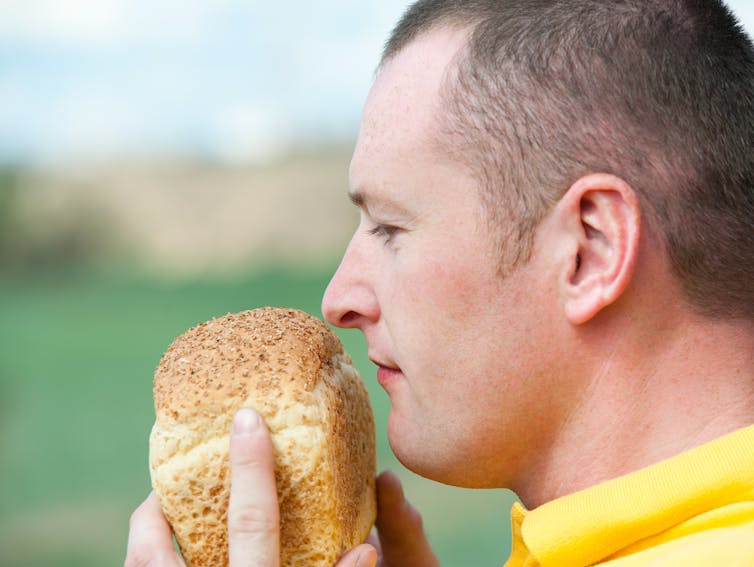Can You Refreeze Beef After Thawing
This time of yr, most fridges are stocked up with food and drinks to share with family unit and friends. Let'due south non make ourselves and our guests ill by getting things wrong when preparing and serving food.
Equally the weather warms up, then does the environment for micro-organisms in foods, potentially allowing them to multiply faster to hazardous levels. And then put the drinks on ice and go on the fridge for the nutrient.
But what are some of those nutrient safe myths we've long come to believe that aren't actually true?
Myth one: if you've defrosted frozen meat or chicken y'all can't refreeze information technology
From a rubber point of view, it is fine to refreeze defrosted meat or craven or any frozen food as long as it was defrosted in a fridge running at 5°C or below. Some quality may be lost by defrosting and so refreezing foods as the cells break down a niggling and the food tin become slightly watery.
Some other choice is to cook the defrosted food and then divide into pocket-size portions and refreeze once it has stopped steaming. Steam in a closed container leads to condensation, which tin can result in pools of water forming. This, combined with the nutrients in the food, creates the perfect environment for microbial growth. And so it's always best to wait nearly thirty minutes before refrigerating or freezing hot food.
Program ahead and then food tin can be defrosted in the fridge, particularly with large items such as a frozen turkey or roll of meat. If left on the bench, the external surface could exist at room temperature and micro-organisms could be growing chop-chop while the center of the piece is still frozen!
Myth ii: Wash meat before you prepare and/or cook it
Information technology is not a good idea to wash meats and poultry when preparing for cooking. Splashing water that might contain potentially chancy bacteria around the kitchen can create more than of a adventure if those leaner are splashed onto ready-to-eat foods or food preparation surfaces.
Information technology is, however, a good idea to wash fruits and vegetables earlier preparing and serving, especially if they're grown near or in the footing equally they may comport some clay and therefore micro-organisms.
This applies particularly to foods that will be prepared and eaten without further cooking. Consuming foods raw that traditionally accept been eaten cooked or otherwise processed to kill pathogenic micro-organisms (potentially mortiferous to humans) might increase the risk of food poisoning.
Fruit, salad, vegetables and other set-to-swallow foods should be prepared separately, abroad from raw meat, craven, seafood and other foods that need cooking.
Myth 3: Hot nutrient should be left out to cool completely before putting it in the fridge
It'southward non OK to leave perishable nutrient out for an extended time or overnight earlier putting information technology in the refrigerator.
Micro-organisms can grow quickly in food at temperatures between 5° and 60°C. Temperature command is the simplest and most effective way of controlling the growth of bacteria. Perishable nutrient should spend as lilliputian fourth dimension as possible in the 5-60°C danger zone. If food is left in the danger zone, exist aware it is potentially dangerous to consume.
Hot leftovers, and any other leftovers for that matter, should get into the refrigerator once they have stopped steaming to reduce condensation, inside near xxx minutes.
Large portions of hot food will cool faster if broken downwardly into smaller amounts in shallow containers. It is possible that hot food such every bit stews or soup left in a bulky container, say a two-litre mixing bowl (versus a shallow tray), in the fridge can take almost 24 hours to cool to the prophylactic zone of less than 5°C.
Myth iv: If it smells OK, then it'southward OK to consume
This is definitely not always true. Spoilage bacteria, yeasts and moulds are the usual culprits for making nutrient smell off or get slimy and these may not brand y'all sick, although it is always appropriate not to consume spoiled food.
Pathogenic leaner can grow in food and not crusade whatsoever obvious changes to the nutrient, and so the best option is to inhibit pathogen growth by refrigerating foods.

Myth five: Oil preserves nutrient then information technology can be left at room temperature
Calculation oil to foods will non necessarily impale bugs lurking in your food. The opposite is true for many products in oil if anaerobic micro-organisms, such equally Clostridium botulinum (botulism), are present in the food. A lack of oxygen provides perfect conditions for their growth.
Outbreaks of botulism arising from consumption of vegetables in oil – including garlic, olives, mushrooms, beans and hot peppers – accept more often than not been attributed to the products not beingness properly prepared.
Vegetables in oil tin exist made safely. In 1991, Australian regulations stipulated that this class of production (vegetables in oil) can be safely made if the pH (a measure of acid) is less than iv.vi. Foods with a pH beneath 4.6 do not in general support the growth of nutrient-poisoning bacteria including botulism.
So proceed nutrient out of the danger zone to reduce your guests' run a risk of getting food poisoning this summer. Bank check out other food safety tips and resources from CSIRO and the Food Safety Information Council, including testing your food rubber cognition.
Source: https://theconversation.com/you-can-thaw-and-refreeze-meat-five-food-safety-myths-busted-51125
0 Response to "Can You Refreeze Beef After Thawing"
Publicar un comentario